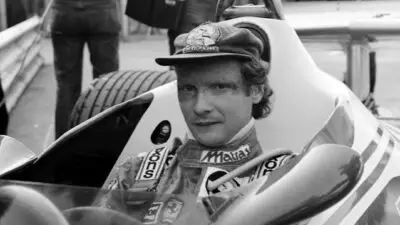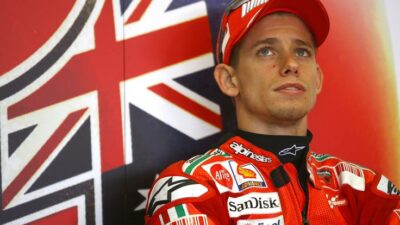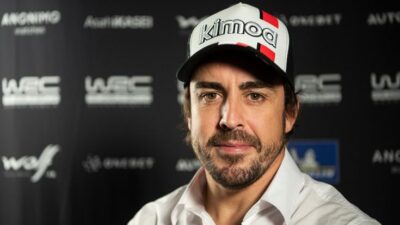Sebastian Vettel’s partnership with Red Bull Racing created one of Formula 1’s most dominant eras. Between 2010 and 2013, the German driver secured four consecutive World Championships, establishing himself as one of the sport’s greatest talents. During this remarkable period, Vettel won 38 races and achieved 44 pole positions for Red Bull, numbers that reflect his extraordinary command of the sport.

Vettel’s time at Red Bull showcased both his exceptional driving skills and the team’s technical brilliance. The RB7, RB8, and RB9 cars were engineering masterpieces that perfectly complemented Vettel’s precise driving style, particularly his ability to maximize the blown diffuser technology. His 2013 season stands as perhaps the most impressive, when he won nine consecutive races to close out the championship.
Some F1 experts consider Vettel’s dominance with Red Bull to be more intense than Max Verstappen’s recent success with the same team. Red Bull engineer Paul Monaghan has noted that during Vettel’s era, teams had more freedom with technical regulations, making his achievements particularly remarkable in the context of a more competitive field.
Foundations of Sebastian Vettel’s Dominance with Red Bull
Sebastian Vettel’s unprecedented success with Red Bull Racing was built on several key elements that aligned perfectly to create a Formula 1 dynasty. The combination of Vettel’s raw talent, Red Bull’s technical innovation, and strategic leadership formed the foundation for four consecutive world championships.
Joining Red Bull and Early Expectations
Sebastian Vettel’s relationship with Red Bull began long before his championship years. After impressive performances in junior categories like Formula BMW, Vettel joined Red Bull’s junior team, Toro Rosso. His stunning victory at the 2008 Italian Grand Prix in wet conditions showcased his exceptional talent.
This performance convinced Red Bull to promote him to their main team for the 2009 season. The expectations were modest initially – Red Bull had never won a championship and was still establishing itself as more than just a “publicity-hungry party team.”
Vettel quickly proved his worth by securing Red Bull’s first F1 victory at the 2009 Chinese Grand Prix. This win marked a turning point for both driver and team, setting the stage for what would become F1’s next dominant partnership.
Development of the Team and Car
Red Bull’s rise to dominance coincided with major regulation changes in Formula 1, which the team exploited brilliantly. Under technical director Adrian Newey, Red Bull developed cars that perfectly suited Vettel’s driving style.
The RB6 through RB9 models were engineering masterpieces that featured:
- Superior aerodynamics, particularly the innovative exhaust-blown diffuser
- Exceptional downforce in high-speed corners
- Perfect balance that complemented Vettel’s precise driving technique
The team’s collaborative approach between designers, engineers, and drivers created a technical advantage that competitors struggled to match. This interdependence of talent and technology was crucial to their success.
Vettel’s feedback was instrumental in the car’s development. His ability to adapt to the vehicle’s characteristics while providing detailed technical input helped refine Red Bull’s designs year after year.
Role of Helmut Marko and Team Strategy
Helmut Marko, Red Bull’s motorsport advisor, played a pivotal role in Vettel’s career development. His unwavering belief in Vettel’s abilities provided the young driver with confidence and stability.
Marko’s influence extended beyond driver management to overall team strategy. He helped create an environment where Vettel’s talents could flourish. The Austrian mentor’s tough but fair approach pushed Vettel to continually improve.
Red Bull’s race strategy during this era was often bold and decisive. The team mastered:
- Qualifying tactics that maximized Vettel’s front-row starting positions
- Tire management that allowed aggressive race plans
- Quick, efficient pit stops that gained crucial seconds
This strategic excellence combined with Vettel’s ability to execute flawlessly under pressure created a period of dominance that saw them win four consecutive world championships from 2010 to 2013.
Key Seasons and Achievements
Sebastian Vettel’s time with Red Bull Racing from 2009 to 2014 produced four consecutive World Championships, numerous records, and established him as one of Formula 1’s most dominant drivers in history. His achievements during this period transformed both his career and Red Bull’s standing in the sport.
2010: Youngest Ever World Champion
Vettel’s 2010 season marked a historic breakthrough in Formula 1. At just 23 years and 134 days old, he became the youngest World Champion in F1 history after a dramatic season finale in Abu Dhabi.
Entering the final race, Vettel stood third in the championship standings behind Fernando Alonso and Mark Webber. Against all odds, he secured pole position and dominated the race while his rivals struggled. This victory clinched the championship by just 4 points.
Throughout the season, Vettel demonstrated remarkable speed with 10 pole positions and 5 race victories. Despite reliability issues mid-season that threatened his title hopes, his persistence and raw pace ultimately delivered Red Bull’s first Drivers’ Championship.
The championship victory was especially meaningful as Vettel had never led the standings until the final race was complete.
2011: Unprecedented F1 Supremacy
The 2011 season showcased Vettel’s complete dominance in Formula 1. He won 11 of 19 Grands Prix, secured 15 pole positions, and led an astonishing 739 laps throughout the season.
Vettel’s ability to extract maximum performance from the Red Bull RB7 was unmatched. He clinched the championship with four races remaining at the Japanese Grand Prix. His qualifying dominance was particularly impressive, often securing pole by margins exceeding half a second.
Key victories included a masterful drive in the rain-affected Canadian Grand Prix and a strategic triumph at the Monaco Grand Prix. Vettel amassed 392 championship points, finishing 122 points ahead of his nearest competitor, Jenson Button.
The season demonstrated not just Vettel’s raw speed but his consistency and mental strength. He finished on the podium in 17 of 19 races, displaying remarkable consistency throughout the year.
2012: Battling for a Third Title
The 2012 season presented Vettel with his greatest championship challenge. Racing against a competitive field with seven different winners in the first seven races, Vettel had to fight harder than ever to defend his title.
Mid-season upgrades to the Red Bull RB8 transformed the car’s performance. Vettel capitalized with four consecutive victories in Singapore, Japan, Korea, and India, building a championship lead when it mattered most.
The season climaxed at the Brazilian Grand Prix. After being spun on the first lap and dropping to last place, Vettel mounted an incredible recovery drive. Despite car damage, he finished sixth, securing his third consecutive world championship by just 3 points over Fernando Alonso.
This hard-fought title demonstrated Vettel’s resilience and adaptability. Throughout the season, he secured 5 pole positions and 5 race victories, proving his ability to perform under intense pressure.
2013: Record-Breaking Victories
Vettel’s 2013 season represents one of the most dominant in Formula 1 history. After a competitive first half, Vettel unleashed an unprecedented winning streak, taking victory in the final 9 races of the season – a record that still stands.
The Red Bull RB9 matched perfectly with Vettel’s driving style, particularly after mid-season tire changes. He secured his fourth consecutive championship at the Indian Grand Prix with three races remaining, joining an elite group of drivers with four or more titles.
Key statistics highlight his supremacy:
- 13 total Grand Prix victories (matching Michael Schumacher’s record)
- 9 consecutive wins (breaking Alberto Ascari’s previous record)
- 397 championship points
- 18 podium finishes from 19 races
This season represented the pinnacle of Vettel’s domination with Red Bull before Formula 1’s shift to hybrid power units in 2014 changed the competitive landscape.
Driver vs Car: The Debate on Vettel’s Success
Sebastian Vettel’s four consecutive world championships with Red Bull Racing from 2010 to 2013 sparked intense discussions about whether his success stemmed primarily from his driving ability or the technical superiority of his car. This debate continues to influence how fans and experts view his legacy in Formula 1.
Driver Skill and Racecraft
Vettel demonstrated exceptional skill behind the wheel during his Red Bull years, particularly in qualifying. His ability to extract maximum performance in qualifying sessions resulted in a remarkable 44 pole positions during his time with the team. Vettel’s racecraft shined most clearly in the tight championship battles of 2010 and 2012, where he faced strong competition from Fernando Alonso’s Ferrari.
Critics have questioned Vettel’s mental strength and adaptability, especially when comparing his performance to teammates. His dominance was most pronounced in 2011 and 2013, when the Red Bull car held a clear advantage over competitors. However, his ability to execute nine consecutive race victories in 2013 demonstrated both car and driver working in perfect harmony.
Some analysts note that Vettel’s later struggles at Ferrari have fueled the debate about his true abilities compared to other champions.
Innovations in Red Bull’s Engineering
Red Bull’s technical prowess under Adrian Newey created cars that maximized the regulations of the era. The RB7 (2011) and RB9 (2013) were particularly dominant, featuring advanced exhaust-blown diffusers and superior aerodynamics that gave Vettel a significant platform for success.
The team’s innovative approach to the Pirelli tires introduced in 2011 allowed Vettel to manage degradation more effectively than competitors. Red Bull’s KERS (Kinetic Energy Recovery System) implementation, while initially troublesome, eventually became a strength.
Vettel’s technical understanding enhanced these advantages. He surpassed typical driver duties in his pursuit of performance, working closely with engineers to optimize the car. A Red Bull mechanic once noted that Vettel “would’ve been an engineer” given his technical knowledge and involvement in development.
Team Dynamics and Mark Webber’s Role
Mark Webber’s presence as Vettel’s teammate from 2009-2013 provides context for evaluating Vettel’s performance. Webber, a capable driver with nine Grand Prix victories, was regularly outperformed by Vettel during their partnership.
The dynamic between the drivers became strained, particularly after the infamous “Multi-21” incident at Malaysia 2013, where Vettel ignored team orders to hold position behind Webber. This highlighted both Vettel’s ruthless competitive nature and the team’s preference toward him as their lead driver.
Webber’s perspective is valuable in the car-versus-driver debate. He experienced the same machinery but achieved different results, suggesting that Vettel’s driving ability added significant value beyond the car’s performance. However, some critics argue that team policies and car development favored Vettel’s driving style.
The Vettel-Webber pairing ultimately showcased how the right driver-team-car combination creates championship success in Formula 1.
Rivalries and Competition During Vettel’s Reign
Sebastian Vettel’s dominant years at Red Bull from 2010 to 2013 were marked by intense rivalries that challenged his supremacy. His four consecutive world championships came amid fierce competition from other teams and occasional internal tensions.
Battles Against McLaren
McLaren posed significant challenges to Vettel’s Red Bull dominance, particularly during the 2010 and 2012 seasons. Lewis Hamilton emerged as one of Vettel’s most formidable rivals during this period, creating a rivalry that would extend for years.
The 2010 season saw Vettel narrowly defeat Hamilton and fellow McLaren driver Jenson Button for the championship. Their wheel-to-wheel battles showcased contrasting driving styles – Vettel’s precision versus Hamilton’s aggression.
In 2012, McLaren again threatened Vettel’s reign with a competitive car. Hamilton secured multiple victories, though reliability issues ultimately hampered McLaren’s championship bid. This rivalry laid groundwork for what would later become one of F1’s most significant competitive relationships when Hamilton moved to Mercedes.
Challenges from Ferrari
Ferrari, led by Fernando Alonso, mounted serious challenges to Vettel’s dominance in both 2010 and 2012. Alonso pushed Vettel to the final race in both seasons despite driving arguably inferior machinery.
The 2012 season finale in Brazil exemplified their rivalry, with Alonso nearly snatching the title despite Vettel’s early-race spin. This period established an intense competitive dynamic between the two champions.
Ferrari’s challenge demonstrated that despite Red Bull’s technical advantages, Vettel had to perform at his peak to secure his championships. Ironically, Vettel would later join Ferrari in 2015, seeking to emulate his Red Bull success with the Italian team.
Comparisons to Max Verstappen
Though their Red Bull eras didn’t overlap, inevitable comparisons exist between Vettel and Max Verstappen’s dominance with the team. Both drivers showcased exceptional qualifying pace and race craft at young ages.
Verstappen’s aggressive driving style contrasts with Vettel’s more methodical approach during his championship years. While Vettel benefited from Adrian Newey’s aerodynamically superior cars, Verstappen has demonstrated remarkable adaptability across regulation changes.
The similarities extend to their relationships with teammates. Vettel’s tense rivalry with Mark Webber, culminating in the infamous “Multi-21” incident at the 2013 Malaysian Grand Prix, echoes some of the team dynamics Verstappen has experienced.
Both drivers established themselves as the clear number one within the team, though their paths to dominance and competitive environments differed significantly.
Iconic Grand Prix and Standout Moments
Sebastian Vettel’s time with Red Bull Racing was filled with incredible performances that showcased his extraordinary talent behind the wheel. His precision driving and tactical brilliance delivered some of Formula 1’s most memorable moments.
Memorable Victories
Vettel’s maiden Formula 1 victory came with Toro Rosso at the 2008 Italian Grand Prix, making him the youngest driver to win a Grand Prix at that time. This victory foreshadowed his future success with Red Bull.
The 2010 Brazilian Grand Prix stands as a pivotal moment in his career, helping secure his first world championship. Vettel’s drive was marked by determination and skill under immense pressure.
His performance at the 2013 Indian Grand Prix was particularly significant as he clinched his fourth consecutive World Championship. The victory highlighted his dominance during the Red Bull era.
Perhaps most impressive was Vettel’s nine consecutive race wins in 2013, a streak that demonstrated his unparalleled consistency and the perfect synergy between driver and machine.
Pole Position Mastery
Vettel earned the nickname “Mr. Saturday” due to his exceptional qualifying performances. Throughout his career, he secured 57 pole positions, many of which came during his Red Bull years.
His qualifying lap at the 2011 Singapore Grand Prix stands as one of the most impressive displays of raw speed in Formula 1 history. Vettel navigated the challenging street circuit with remarkable precision, leaving competitors in awe.
The 2010-2013 seasons showcased Vettel’s ability to extract maximum performance during qualifying sessions. His technique of perfecting the final sector of many circuits became his signature, often securing pole by fractions of a second.
Vettel’s pole-to-victory conversions were particularly impressive, demonstrating his ability to maintain composure and lead from the front—a skill that defined his championship years.
Historic Team Milestones
Vettel’s partnership with Red Bull resulted in four consecutive Constructors’ Championships from 2010 to 2013, establishing the team as a dominant force in Formula 1. This achievement represented a remarkable rise for the relatively young team.
The 2010 season marked Red Bull’s breakthrough, with Vettel becoming the youngest World Champion in Formula 1 history at just 23 years old. This victory initiated an era of unprecedented success for both driver and team.
The technical partnership between Vettel and Chief Technical Officer Adrian Newey proved unstoppable. Their collaboration produced some of the most aerodynamically advanced cars in Formula 1 history.
By the end of the 2013 season, Vettel and Red Bull had rewritten the record books with 13 Grand Prix victories in a single season, a testament to their collective excellence and dominance during this golden era.
Legacy of Vettel’s Red Bull Era
Sebastian Vettel’s time with Red Bull Racing from 2009-2014 transformed both his career and the team’s standing in Formula 1. His four consecutive world championships established a foundation that continues to influence the sport today.
Impact on Red Bull’s Future Success
Red Bull’s dominant era with Vettel fundamentally changed the team’s identity. Before Vettel, Red Bull was seen as a “publicity-hungry party team,” but his success helped establish them as a serious racing powerhouse. His first win at the 2009 Chinese Grand Prix marked the beginning of a new chapter.
The technical knowledge and winning culture developed during Vettel’s era created a blueprint for future success. Helmut Marko, Red Bull’s motorsport advisor, used the experience gained during the Vettel years to develop future talents.
This foundation directly contributed to Max Verstappen’s later championships. The engineering team that supported Vettel’s dominance evolved to create the platform for Verstappen’s four consecutive titles from 2021 to 2024.
Transition to Other Teams and Roles
After leaving Red Bull in 2014, Vettel joined Ferrari with hopes of emulating his hero Michael Schumacher. Though he never secured another championship, he came close in 2017 and 2018, challenging Lewis Hamilton’s Mercedes dominance.
Vettel’s post-Red Bull career revealed his adaptability and resilience. At Ferrari, he evolved from being purely performance-focused to becoming a team leader and mentor to younger drivers.
His later years in Formula 1 showcased a more mature competitor who reshaped his approach to racing. This evolution demonstrated the complete driver that Red Bull had helped develop.
Influence on the Modern F1 Landscape
Vettel and Red Bull’s domination forced other teams to evolve. Their technical innovations and aggressive development pace raised standards across the grid.
The Vettel era helped establish a model for nurturing young talent. Red Bull’s junior program, which brought Vettel from Toro Rosso to the main team, became the gold standard for driver development in F1.
Vettel’s driving style – particularly his mastery of the blown diffuser era – influenced a generation of drivers. His precise, methodical approach to qualifying and race management remains a benchmark for modern competitors.
The championship run left a lasting impact on how teams approach car development, with Red Bull’s aggressive mid-season improvements setting new expectations for in-season development.









